💪 Mastering Functional Training for Real-Life Strength
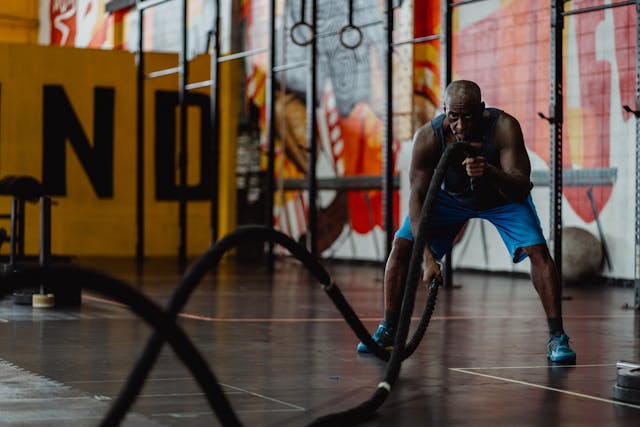
In today’s fast-paced world, where strength is measured not only by how much you lift but also by how well you move, functional training exercises are the secret to building a healthy, mobile, and powerful body. Unlike traditional gym workouts, functional training mimics real-life movements—helping you bend, twist, push, pull, and lift efficiently in your daily life. 🏃♂️
🤔 What is Functional Training?
Functional training exercises are movements that train your muscles to work together in harmony, preparing your body for everyday tasks. This type of training focuses on balance, coordination, endurance, and core strength. It’s about building a body that can handle everything from carrying groceries to hiking uphill. 🌄
Read more: Functional Fitness Guide: Build Strength, Mobility & Endurance for Everyday Life 💪
🏠 Why Functional Training Is Perfect for Everyone
- ✅ Improves posture and balance
- ✅ Builds core strength and mobility
- ✅ Enhances athletic performance
- ✅ Prevents injuries by strengthening stabilizer muscles
- ✅ Easy to do at home without expensive equipment
🧠 The Science Behind Functional Movement
Our bodies are made to move in multiple planes of motion. Functional training uses compound exercises that activate multiple joints and muscles, simulating natural movements. When done regularly, functional training exercises improve muscle memory, agility, and coordination. 🧬
🔥 Top 10 Functional Training Exercises to Add to Your Routine

- Bodyweight Squats: Strengthen your legs and core while mimicking the act of sitting and standing.
- Lunges: Boost your balance and flexibility, especially for walking and climbing stairs.
- Push-Ups: Develop upper body and core stability.
- Deadlifts: Ideal for lifting objects safely from the ground.
- Plank Holds: Engage your core for spinal protection and posture support.
- Medicine Ball Slams: Improve power and coordination.
- Step-Ups: Great for stair climbing strength and single-leg balance.
- Kettlebell Swings: Explosive movement to train hips and glutes.
- Farmers Carry: Enhance grip strength, core control, and walking stability.
- Jump Squats: Build power and cardio fitness.
⏱️ Sample 30-Minute Functional Training Workout
This beginner-friendly circuit can be done three times a week for total-body improvement:
- 1 min squats
- 30 sec plank
- 1 min push-ups
- 1 min lunges
- 1 min kettlebell swings (or water bottle swings)
- Repeat 3 rounds
🧘♀️ Functional Flexibility: Don’t Skip Stretching
Mobility is a key component of functional training exercises. Dynamic stretches before the workout and static stretches after improve performance and prevent injury. Try moves like arm circles, hip openers, and hamstring stretches. 🌀
Read more: Complete Fitness and Exercise Guide for a Healthy Lifestyle 💪🏃♀️0
🥗 Nutrition to Support Functional Fitness

No training is complete without proper fuel. Incorporate lean proteins, whole grains, healthy fats, and antioxidant-rich fruits and vegetables. Hydration is equally important for muscle function. 🥑🍌
🏠 Home vs Gym: Where Should You Train?
Functional workouts are highly flexible. Whether at home using bodyweight or in the gym using resistance bands and kettlebells, you can perform functional training exercises anywhere. A simple yoga mat and a pair of dumbbells can go a long way. 🏡🏋️
🧓 Functional Fitness for All Ages
One of the biggest benefits of functional training exercises is that they’re safe and adjustable for all fitness levels. Older adults can maintain independence and reduce the risk of falls, while athletes can enhance performance. 👶🧓
📈 Track Your Progress
Use a notebook or fitness app to log your reps, rounds, and energy levels. Celebrate progress like improved balance, fewer joint pains, or being able to carry heavier grocery bags. 📊
🔄 How to Progress Your Functional Training Over Time
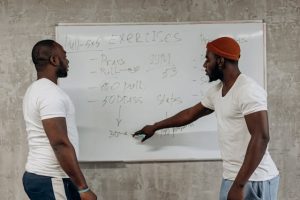
Once you’ve started your journey with functional training exercises, the next step is progression. The beauty of functional fitness is that it evolves with you. As your strength, balance, and mobility improve, you can gradually make your routines more challenging. This ensures continuous improvement and prevents plateaus.
📈 Ways to Progress:
- Increase Repetitions or Sets: Add more rounds or reps to challenge endurance.
- Add Resistance: Use resistance bands, dumbbells, or kettlebells to increase difficulty.
- Reduce Rest Time: Shorter breaks between exercises increase intensity and stamina.
- Unstable Surfaces: Train with balance boards to activate more stabilizer muscles.
- Compound Movements: Combine moves like squats with shoulder presses for full-body gains.
💥 Common Mistakes to Avoid in Functional Training
While functional training exercises are effective, improper execution can reduce benefits and increase injury risks. Here are key mistakes to avoid:
- Skipping Warm-Ups: Always activate your muscles and joints before intense movement.
- Rushing Through Exercises: Focus on proper form and control, not just speed.
- Neglecting Core Engagement: The core is essential for functional stability—never ignore it.
- Lack of Structure: Avoid randomly choosing exercises without a plan or progression.
- Overtraining: Listen to your body and rest adequately for proper recovery.
🧠 Building Mind-Muscle Connection
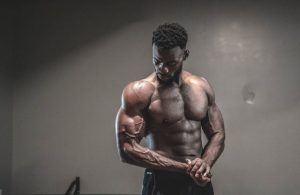
Functional training isn’t just physical—it’s mental too. Developing a strong mind-muscle connection helps improve balance, coordination, and proprioception. As you perform functional training exercises, stay mentally engaged. Concentrate on how each muscle works, your breathing, and your posture. This mental focus enhances performance and reduces injury risks.
Try incorporating breathing techniques like box breathing or nasal breathing during workouts to increase calmness and endurance. Mindful movement makes your workout safer and more efficient. 🧘
Read more: How Sleep Affects Mental Health: The Powerful Link You Must Know 🧠🌙
🏃 Functional Cardio for Endurance
Cardiovascular health is a crucial part of overall fitness. Instead of running on a treadmill for hours, functional cardio uses functional training exercises that build strength and raise your heart rate simultaneously. These compound, high-intensity movements improve endurance, agility, and coordination.
🔥 Sample Functional Cardio Exercises:
- Burpees: A full-body movement that enhances power and cardio.
- High Knees: Builds speed and coordination while working your core.
- Jump Lunges: Combines balance, strength, and explosive movement.
- Mountain Climbers: Works your core and increases heart rate rapidly.
- Battle Ropes: Great for shoulders, arms, and cardiovascular endurance.
✈️ Stay Fit While Traveling
Traveling doesn’t mean sacrificing your health. You can easily adapt functional training exercises to suit hotel rooms, parks, or small spaces. Focus on bodyweight moves and dynamic routines that require no equipment.
🧳 10-Minute Hotel Room Workout:
- 15 squats
- 10 push-ups
- 20 mountain climbers
- 10 jump squats
- 30-second plank
- Repeat for 3 rounds
Quick sessions like this maintain momentum, improve energy, and keep your metabolism active on the go.
🎯 Setting SMART Goals for Functional Fitness

Clear goals drive success. Use SMART goals—Specific, Measurable, Achievable, Relevant, and Time-bound—to track your progress in functional training exercises.
💡 Example SMART Goal:
- Specific: Improve balance and agility for hiking.
- Measurable: Hold a one-leg stance for 1 minute.
- Achievable: Practice balance drills 4x a week.
- Relevant: Directly improves hiking ability.
- Time-bound: Reach the goal within 30 days.
Adjust and update your goals regularly based on progress. Functional fitness is a journey of self-improvement.
🙌 Everyday Benefits of Functional Training
The ultimate reward of functional training exercises isn’t just strength—it’s functionality. From lifting groceries to playing with kids or preventing falls as you age, these exercises make everyday life smoother and safer.
Studies show functional fitness improves bone density, joint flexibility, and cognitive function. Whether you’re 18 or 80, these exercises support longevity, independence, and well-being. When your body is strong and capable, your confidence and quality of life skyrocket. 🎉
So instead of chasing aesthetics or numbers on a scale, focus on how your body feels, moves, and performs in real life. That’s the true definition of fitness. 💪
Read more: Secrets to Achieve Natural Glowing Skin: Ultimate Guide to Natural Beauty ✨🌿
🌟 Final Thoughts: Build Strength for Life

Forget chasing unrealistic body goals. The real win lies in becoming strong, agile, and capable in your everyday life. Functional training is a long-term investment in your body’s real-world performance. Make it a lifestyle! 🌈
For more expert advice on fitness techniques, check out ACE Fitness Blog — a trusted resource for science-based workout guidance.
Want to explore fitness gadgets and equipment reviews? Visit Fitness Gear HQ for unbiased reviews and comparisons.
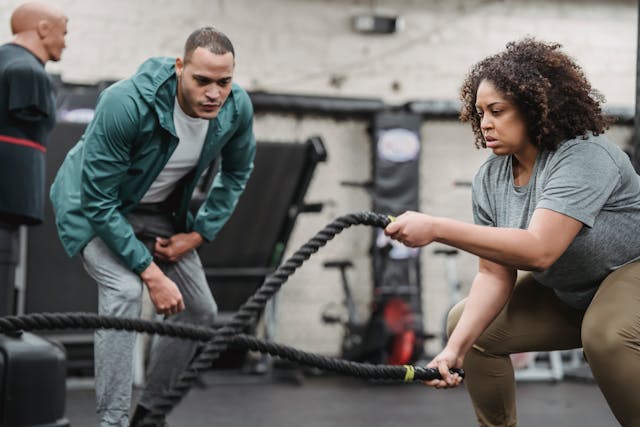

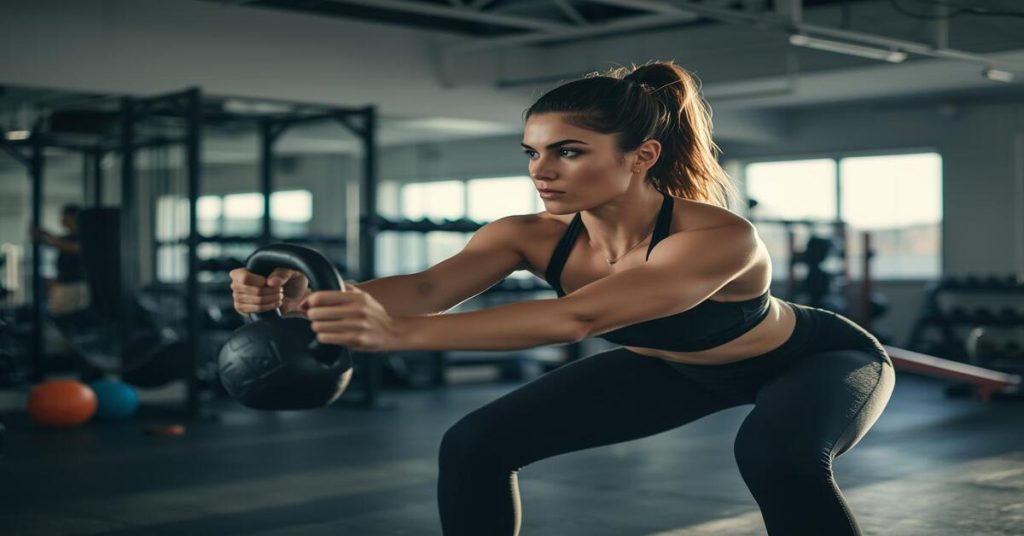
Pingback: - DayHealthy
Pingback: 100%Full Body Fitness Routine for Total Strength & Health
Pingback: 8-Minute Desk Yoga Stretch Routine to Boost Focus & Reduce Stress